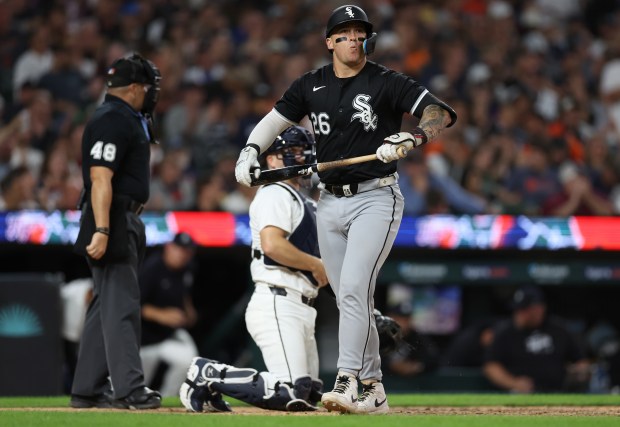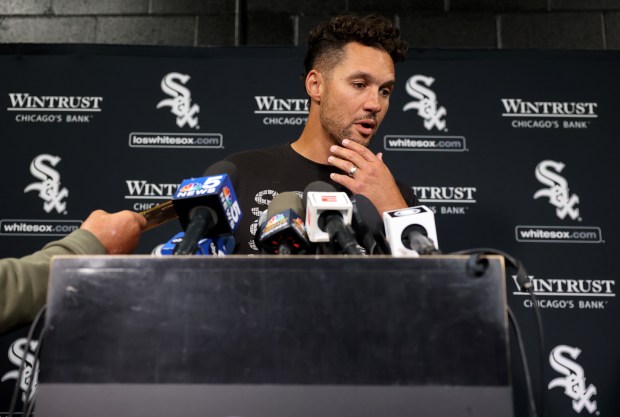Baseball is filled with memorable numbers.
Say “56,” and Joe DiMaggio’s hitting streak comes to mind. On the pitching side, there is Cy Young’s record 511 career victories.
When it came to team futility, the 1962 New York Mets were the standard for more than 60 years with 120 losses. That is, until this season.
The Chicago White Sox finished 41-121, setting the modern-day Major League Baseball record for losses in a season.
Where does the club go from here? There’s clearly a lot of work to be done.
Here are three offseason questions.
1. Who will be the next manager?
The Sox dismissed Pedro Grifol on Aug. 8 after he went 89-190 in 1½ seasons, including a 28-89 record in 2024.
“These two seasons have been very challenging,” general manager Chris Getz said at the time. “Unfortunately the results were not there, and a change is necessary as we look to our future and the development of a new energy around the team.”
Grady Sizemore took over on an interim basis as the Sox began the process of finding a permanent fit.
“We’re looking for someone that understands the situation that we’re presently in, that is up for the challenge,” Getz said last week. “I’m looking for a partner in this to help lead this organization. That comes in different forms.”
The Sox have “focused mainly outside the organization and on someone who’s in uniform,” Getz said, with Sizemore “in consideration.”
“It’s been a tough year, but I have enjoyed my time here and I’ve enjoyed working with the guys,” Sizemore said Saturday. “I’m not ready to just move on from the team and the organization. I want to do everything I can. Whatever role that is, I want to be part of this being turned around.”
Beyond the manager position, Getz said the Sox are evaluating a number of “processes.”
“We brought in (head of international scouting) David Keller, who is going to help (Latin American player development manager) Louis Silverio. They’re going to team up on the international side,” Getz said. “We’re building out an evaluation and development process with them, with the group we have now.
“We’re looking to improve our analytic group. We’ve identified areas that need to be more emphasized to allow us to develop players and identify players and acquire players. And that’s the focus for this offseason, to continue to build on that.”
2. Will Garrett Crochet be traded?

Last offseason, the buzz centered on a potential Dylan Cease trade. The Sox dealt the right-hander in March to the San Diego Padres.
This offseason, Crochet will be a name to watch.
The left-hander had a season Getz called “nothing short of excellent,” making the move from the bullpen to the rotation.
Crochet went 6-12 with a 3.58 ERA in 32 starts. Even with the Sox monitoring his workload, he finished fourth in the American League with 209 strikeouts.
“With going into this year and him not making a start since his college days and to make start(s) here late in September just speaks to his effort level, his determination,” Getz said. “And I think that’s had a really positive effect on our clubhouse.”
Crochet’s name came up in trade speculation during the season, but the Sox held on to him at the July 30 deadline. Expect that speculation to pick back up this offseason.
Two years of club control remain for the 25-year-old.
“In the reality of the sport, you’ve got to assess where players are at contractually and look for opportunities to help the organization long term,” Getz said.
3. What steps will be taken to improve the offense?

The Sox were last in the majors with 507 runs — 97 behind the 29th-place Tampa Bay Rays. They ranked at the bottom in several other offensive categories, including home runs (133), walks (395), batting average (.221), on-base percentage (.278) and slugging percentage (.340).
“I look back on where we were from a pitching standpoint, in one season of the development, the steps forward we’ve made, I’m very happy with,” Getz said. “Obviously on the offensive side, we need to look deeper and find ways to improve to balance out this organization so we can be a successful major-league club.”
In addition to continuing to develop the current crop of minor-leaguers, available avenues include trades and free agency.
“We haven’t determined the level of free agency that we’ll be working in,” Getz said. “I can assure you that it won’t be the top of the market, but there are going to be other opportunities to go out there and sign players to help us.
“You look back at the signings of (starter) Erick Fedde and these other players that helped our major-league club, but also we were able to trade these players and reinvest in the organization. There’s going to be those types of opportunities as well.”



